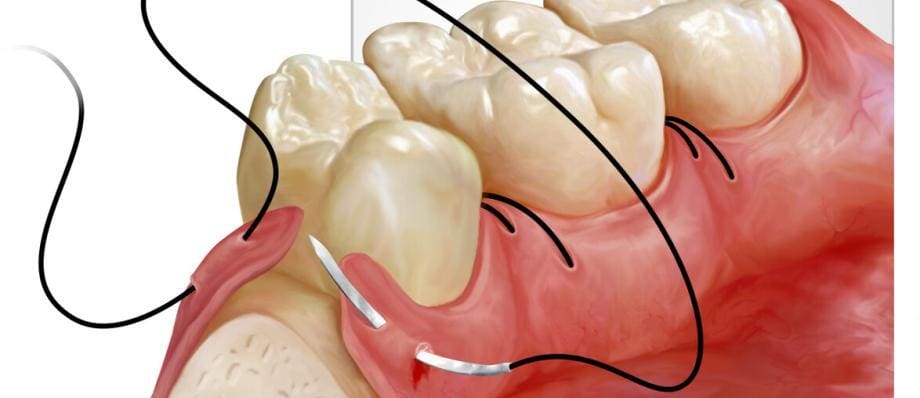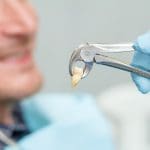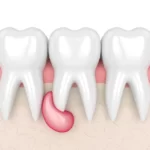Suturing is an integral aspect of dentistry that plays a crucial role in facilitating proper wound healing and achieving optimal outcomes after various dental procedures. The process involves the use of sutures, also known as stitches, to hold tissue together, ensuring adequate healing and minimizing the risk of complications. In this article, we will delve into the significance of suturing in dentistry, explore different suturing materials and techniques, and discuss their applications across various dental procedures.
The Importance of Suturing in Dentistry
Suturing in dentistry is not limited to one particular procedure; it finds application in a wide range of treatments, including extractions, periodontal surgeries, implant placements, and oral tissue repairs. Proper suturing not only promotes wound closure but also aids in achieving hemostasis, preventing infection, and minimizing postoperative discomfort. It provides stability to the wound site, reducing the chances of wound dehiscence and ensuring the preservation of the delicate oral tissues.
Suturing Materials
- Surgical Silk
- Polyglycolic Acid (PGA) and Polylactic Acid (PLA)
- Polyglactin 910 (Vicryl)
- Chromic Gut
- Nylon (Ethilon) and Polypropylene (Prolene)
Surgical Silk
Silk sutures are commonly used in dentistry due to their smooth passage through tissues and secure knotting. However, they are not absorbable and may require removal.
Polyglycolic Acid (PGA) and Polylactic Acid (PLA)
These synthetic absorbable sutures gradually degrade within the body, eliminating the need for suture removal. They are suitable for procedures where extended tissue support is required.
Polyglactin 910 (Vicryl)
Vicryl sutures are a blend of absorbable synthetic polymers. They maintain their tensile strength for a specific duration, after which they are absorbed by the body. These sutures are ideal for various dental applications.
Chromic Gut
Derived from sheep or cattle intestines, chromic gut sutures are treated to delay their absorption, providing longer-lasting support. They are absorbable and do not require removal.
Nylon (Ethilon) and Polypropylene (Prolene)
These synthetic non-absorbable sutures are suitable for procedures where long-term tissue support is necessary. They are often used in oral and maxillofacial surgeries.
Suturing Techniques
- Interrupted Suturing
- Continuous Suturing
- Simple Suturing
- Horizontal Mattress Suturing
- Vertical Mattress Suturing
- Horizontal Sling Suturing
- Purse-String Suturing
- Vertical Mattress Interrupted Suturing
- Subperiosteal Suturing
- Locking Loop Suturing
- Continuous Locking Suturing
- Periosteal Sling Suturing
- Horizontal Continuous Suturing
- Subcuticular Suturing
- Running Lock Suturing
Interrupted Suturing
This technique involves tying individual sutures, creating separate knots at specific intervals along the wound. Interrupted suturing provides precise control over wound alignment and is commonly used in procedures like extractions and soft tissue repairs.
Continuous Suturing
Also known as running suturing, this technique involves a single, continuous suture thread that runs along the entire wound. Continuous suturing saves time, maintains wound alignment, and provides an effective seal. However, if one part of the suture breaks, the entire line may unravel.
Simple Suturing
Simple sutures are used to align wound edges precisely. The suture passes through both sides of the wound, ensuring a snug closure. This technique is employed in various intraoral procedures.
Horizontal Mattress Suturing
Particularly useful for stabilizing tension-prone areas, horizontal mattress sutures involve passing the suture needle horizontally through the tissue, then vertically across the wound and out through the opposite side. This technique minimizes tissue distortion and is employed in procedures like soft tissue grafting.
Vertical Mattress Suturing
Similar to horizontal mattress sutures, vertical mattress sutures involve passing the needle vertically through the tissue, then horizontally across the wound and out through the opposite side. This technique distributes tension evenly and is often used in wound closure where there is a need to evert the tissue edges.
Horizontal Sling Suturing
This technique is often used in cases where tension needs to be distributed across a wide area. The suture is passed horizontally through one side of the wound, underneath the tissue, and then brought out through the other side. It resembles a sling and provides excellent support for wound closure.
Purse-String Suturing
Purse-string sutures are employed when closing circular or oval-shaped incisions. The suture is threaded through the tissue in a continuous manner, creating a gathered effect that tightens the wound edges around a central point. This technique is commonly used in procedures like the closure of extraction sockets after impacted wisdom tooth removal.
Vertical Mattress Interrupted Suturing
This modification of the vertical mattress technique involves creating interrupted stitches instead of continuous ones. Each suture loop is placed separately, allowing for precise control over tension and wound alignment. It’s particularly useful when managing tissue flaps and achieving a secure closure.
Subperiosteal Suturing
Subperiosteal suturing is employed in periodontal and oral surgery procedures where the periosteum, a thin layer of tissue covering the bone, needs to be repositioned or stabilized. The suture is placed just beneath the periosteum to secure it in place, aiding in optimal wound healing.
Locking Loop Suturing
This technique involves creating a loop at one end of the suture, which is then secured by threading the other end through the loop. It forms a locking mechanism that prevents the suture from loosening or slipping, making it suitable for situations where knot security is critical.
Continuous Locking Suturing
A variation of continuous suturing, this technique involves adding an extra step to create a locking loop at the beginning of each stitch. This enhances the overall security of the suture line and reduces the risk of unraveling if one part of the suture breaks.
Periosteal Sling Suturing
In procedures involving tissue grafts or bone augmentation, periosteal sling suturing helps stabilize the graft material or membrane. The suture is passed through the periosteum and anchored to adjacent structures, providing support and ensuring proper integration.
Horizontal Continuous Suturing
Similar to the continuous suturing technique, this approach involves creating a series of horizontal stitches along the wound. It’s particularly useful for achieving a watertight closure in areas prone to saliva or fluid contamination.
Subcuticular Suturing
Also known as intradermal or subdermal suturing, this technique is employed to close incisions or wounds beneath the skin’s surface. It minimizes scarring by avoiding the creation of knots on the wound surface.
Running Lock Suturing
This technique combines continuous suturing with locking loops. It involves creating intermittent locking loops along the continuous suture line, enhancing knot security throughout the wound.
Applications of Suturing in Different Procedures
- Extractions
- Periodontal Surgeries
- Implant Placements
- Soft Tissue Grafting
Extractions
Proper suturing after tooth extraction ensures the formation of a blood clot, promoting healing and preventing dry socket. Interrupted sutures are commonly used for this purpose.
Periodontal Surgeries
Suturing is essential in various periodontal procedures, such as flap surgeries and pocket reduction surgeries. Different techniques, including horizontal and vertical mattress suturing, help achieve optimal tissue adaptation.
Implant Placements
Suturing is employed to cover and protect the implant site, aiding in successful osseointegration. Non-resorbable sutures are often used in these cases.
Soft Tissue Grafting
Suturing techniques like vertical mattress suturing are utilized in procedures such as gingival grafts, where precise adaptation of grafted tissue is crucial.
Best Practices for Suturing in Dentistry
- Selecting the Right Suture
- Maintaining Asepsis
- Tension Management
- Knot Security
- Tissue Handling
Selecting the Right Suture
The choice of suture material should be based on the procedure, the tissue being sutured, and the desired duration of support.
Maintaining Asepsis
Proper infection control practices, including the use of sterile gloves and instruments, are essential to prevent postoperative infections.
Tension Management
Sutures should be placed to achieve appropriate tension for wound closure without causing tissue strangulation.
Knot Security
Sutures should be tied securely to prevent premature knot loosening, which could lead to wound dehiscence.
Tissue Handling
Gentle tissue handling during suturing minimizes trauma and ensures the preservation of blood supply to the tissues.
Future Trends and Innovations in Suturing Techniques
As dentistry continues to evolve, so do the techniques and materials used for suturing. Researchers and manufacturers are consistently striving to enhance patient outcomes, reduce procedure times, and improve overall patient comfort. Here are some emerging trends and innovations in suturing techniques in dentistry:
- Biodegradable Sutures
- Suturing Aids
- Suturing Training and Simulation
- Customizable Sutures
- Nanotechnology in Sutures
- 3D-Printed Sutures
Biodegradable Sutures
The development of advanced biodegradable sutures holds the potential to revolutionize wound closure in dentistry. These sutures are designed to break down over time, eliminating the need for suture removal. This not only saves time for both the patient and the dentist but also reduces the risk of suture-related complications.
Suturing Aids
Innovative tools and devices are being designed to assist dentists in achieving more precise and efficient suturing. These aids could include specialized needle holders, suture-passing instruments, and tension-adjustment tools to optimize wound closure.
Suturing Training and Simulation
With the advancement of virtual reality (VR) and augmented reality (AR) technologies, dental professionals can now practice suturing techniques in a simulated environment. This allows for realistic hands-on training, enabling dentists to refine their skills before performing procedures on actual patients.
Customizable Sutures
As the understanding of personalized medicine grows, there’s potential for sutures to be tailored to each patient’s specific needs. This could involve choosing the most appropriate suture material, size, and technique based on factors like tissue type, patient’s medical history, and desired healing outcomes.
Nanotechnology in Sutures
Researchers are exploring the incorporation of nanomaterials into sutures, aiming to enhance their antimicrobial properties and overall performance. Nanotechnology could potentially reduce the risk of infection and improve wound healing in dental procedures.
3D-Printed Sutures
The field of 3D printing has expanded to include medical devices, and sutures are no exception. Custom-designed 3D-printed sutures could offer precise fit and enhanced functionality for specific dental procedures.
Conclusion
Suturing techniques remain a cornerstone of modern dentistry, contributing significantly to successful wound healing, reduced complications, and improved patient comfort. Dental professionals must stay abreast of the latest advancements in suture materials, techniques, and tools to provide the best possible care to their patients.
As technology continues to advance, the future of suturing in dentistry holds exciting possibilities, from biodegradable sutures that eliminate the need for removal to innovative tools that enhance suturing precision. While the core principles of suturing – proper tissue handling, asepsis, tension management, and knot security – remain paramount, integrating new techniques and materials can further elevate the quality of care provided by dental practitioners.
In the end, mastering suturing techniques is an essential skill that empowers dental professionals to create successful outcomes and lasting impressions on their patients’ oral health and overall well-being. By continuously refining their suturing expertise and embracing new advancements, dentists ensure that they are equipped to offer the highest standard of care in a rapidly evolving field.





